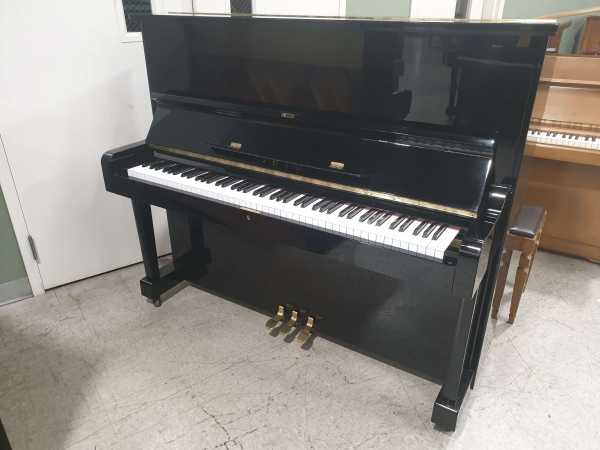

They also distinguished themselves by using the finest materials.Īt the beginning of the twentieth century the Mason & Hamlin piano reviews were great, and it was already an extremely respected brand of instruments. In 1881 they began to create upright and grand pianos, employing the best technicians to develop the Mason & Hamlin brand. One of Hamlin's inventions was to introduce the sounds of various instruments to the organ. After about 20 years of operation they were the leading producer of reed organs, they also created a harmonium organ and then a cabinet organ. Initially, the Mason & Hamlin factory was involved in the production of reed organs - like many manufactures at that time. Henry's father, Lowell Mason, was a composer and teacher who was the first to introduce music to public American schools! These two people were united by the desire to build the most perfect instrument in the world. The name comes from the names of two exceptional people - Henry Mason the pianist and Emmons Hamlin the inventor and mechanic. The history of the Mason & Hamlin pianos begins in Boston in 1854. And if you don't know them, this article can help! If you are familiar with the world of pianos, you are surely familiar with these unique instruments.

One of them is the legendary Mason & Hamlin.

In America, out of hundreds of factories, only 3 brands of instruments are still produced. You need to deepen your knowledge before you decide to buy an instrument. This is a great difficulty, because we can no longer clearly state by name where the piano was made - although it was originally made in Germany, it can now be made in Asia, for example. Nowadays we have many brands of these instruments, but they are often not produced in the country where they were originally made. Generally we can assume that pianos have been available for 150-200 years. Initially they were completely unique instruments, used only by recognized musicians. It even has a modern PianoDisc system installed that also needed some TLC.Keyboard instruments such as upright and grand pianos have been produced worldwide for about 300 years. But they are still interesting on a nerdy historical level, and this one in particular is still going and well-loved. They are likely to dwindle away over the years since the parts are obsolete and would therefore be difficult to replace, eventually rendering the pianos unusable. All in all, I enjoyed the experience of seeing and working on this rare type of piano.
MASON AND HAMLIN UPRIGHT PIANO HOW TO
I do, however, have to say that I’m really glad I didn’t have to figure out how to replace a string on this one.

It just happens to be a type of technology that didn’t end up winning out, like VHS vs beta (for those of you old enough to remember that fun battle). The piano was right on pitch when I got to it though it hadn’t been tuned for a few years, which demonstrates that it is stable, and wasn’t really any more difficult physically than what I am used to. The fascinating thing about the screw stringer piano is that it is actually a great tuning system! There are minor differences between different brands, but for the most part, all pianos built since that time contain parts that correspond to each other in predictable ways for technicians.
MASON AND HAMLIN UPRIGHT PIANO TRIAL
The general form of the piano is easily recognizable, but there was a lot of trial and error and experimentation amongst the various piano manufacturers until the modern standard won out in the early 1900s. Like any other type of technology, pianos have evolved greatly since their invention in the early 1700s. #piano #pianotuning #pianotuner #pianotechnician #pianotechadventures #uprightpiano #playerpiano #screwstringerpiano #masonandhamlinĪ post shared by Andante Piano Works on at 4:07pm PST I don’t always feel like stepping out of my comfort zone, but sometimes it’s fun, if only to say I did it once upon a time, you know, like that time I followed through on a deal shaved my head in college (I don’t recommend doing this right before the winter in central NY state sets in, FYI). It took a bit of extra concentration, mainly due not being used to the alignment of the tuning pegs, but it tuned up rather well, if I do say so myself. I wasn’t expecting a screw stringer (an obsolete stringing system built by Mason & Hamlin from 1883-1903) when I lifted the lid on this old upright piano yesterday, but I was feeling adventurous and tuned it anyways.


 0 kommentar(er)
0 kommentar(er)
